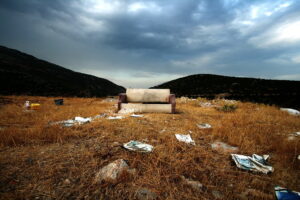Inside the Welsh schools using nature-based design
Simon Richards, Founder and Managing Director of Land Studio, explains how his firm can give educational institutions the chance to have a positive environmental impact.

Last month Rishi Sunak’s Government revealed plans to delay the new Biodiversity Net Gain (BNG) laws from coming into force from November this year to January 2024.
The delay came in the same month the Government also rowed back on net zero commitments and ‘nutrient neutrality’ pollution rules.
BNG is an important piece of legislation because 50% of the UK economy is linked to nature. Unfortunately, the UK is one of the most biodiversity depleted countries in the world so restoring our natural environments is critical to building our future green economy.
In England, the Environment Act 2021 mandated a 10% net gain in biodiversity for all new developments, with specified exemptions, with habitats secured for a minimum of 30 years through planning obligations or conservation covenants. We’ll have to wait and see if the legislation gets pushed back further than January 2024.
Perhaps England needs to look a bit closer at the Welsh Government’s Net Benefits for Biodiversity approach which does not use a metric but instead puts the focus on proactive consideration of biodiversity and wider ecosystem benefits within a placemaking context early in the design approach.
A shift is happening and it’s refreshing.

We’re really pleased on the new approach Gwynedd Council has taken on procurement of their consultants for a new school project which has a focus on Building with Nature and sustainability at its heart.
An environmentally friendly and climate resilient ethos will be at the heart of a brand new £12m school in Bontnewydd, one of only three schools in Wales to win the Welsh Government’s Sustainable Schools Challenge competition.
The school will have first class active travel links to encourage children to walk or cycle in, the building will use renewable and sustainable energy and there are plans to reuse as much of the school’s original materials as possible, reducing the carbon life cycle of the new building.
It’s the first time we have seen sustainable drainage design being within the Landscape Architect package and, not as traditionally procured, with the structural engineer.
Along with the Building with Nature Assessor role, Land Studio are perfectly aligned to this approach and we’re looking forward to driving the design with TACP Architects to bring a more holistic approach of the site design and integration of the building within the landscape and the wider community.
As landscape architects we have an important role to play in helping clients such as schools to respond to the climate emergency and to challenge local authorities, their planning departments and traditional ways of building.
We can help to raise aspirations. For too long, design has been about putting up a building, laying fixed areas of tarmac and installing drainage below ground without thinking about the best way to respond to the context of the site.
The landscape architects and drainage experts usually get brought in late in the process to make everything ‘look pretty’ and make the drainage work. That is far too late to say that a building could have been better located on the site, orientated to make the most of the sun or there’s a more efficient way of dealing with site levels and surface water rather than putting pipes under the ground.
We know there’s a different way of doing things. Climate change has brought to the forefront the need for different disciplines to work very closely together and to be involved with building projects – whatever their size – right from the very start.

If local authorities could lead with landscape, ecology and sustainable drainage expertise it flips the whole outlook of a project. Start with analysis of site levels and the surface water drainage strategy. Analyse the landscape setting. Consider the local ecology. Work out where the best place is to site a building in its context. It’s a completely different approach and it requires a cultural shift.
Wales is leading the way with its Sustainable Drainage Approval Body (SAB) which requires new developments to include Sustainable Drainage Systems (SuDS) features that comply with national standards.
It means you need detailed drainage design, set within a comprehensive landscape framework, at the planning stage and this is where we can make a difference because we can have an input right from the start.
If a build project is designed well, drainage should never be an issue. In fact, it should be better. Landscape architects and civil engineers have traditionally been pretty quiet about their work but I think it’s time we made some noise!
Traditionally, landscape architects have been too reserved and haven’t wanted to put their heads above the parapet. Now is the time to do so because we are intrinsically better placed to generate better schemes with future-proof designs that integrate sustainable practices. It’s in our DNA to design with nature in mind, to consider people, flora and fauna and habitat development and to go well beyond 10% biodiversity net gain.

In the schools we work with, our holistic site approach enables us to locate each key component in the right place. Rain gardens are designed to integrate around play areas to catch surface water and siphon it into planting beds filled with wildflowers and ornamental plants that can cope with flood or drought conditions.
We locate parking areas in appropriate spaces to create a pedestrian focus to the site and use permeable paving to link in with the overall surface water strategy. We design different spaces, fully integrated in the landscape for learning, play and reflection including outdoor classrooms and forest school areas.
We plant new hedgerows, create wildlife corridors, build bug towers and improve the condition of degraded habitats.
We create new pond features, grasslands and meadow habitats. We don’t recommend high maintenance areas that need cutting every week, because we champion green spaces that only need cutting twice a year, and where children can plant seeds and wildlife can flourish.
It’s not just about creating a new roadmap to improve a school’s footprint and biodiversity credentials. We have to educate people to enable a cultural shift on climate change.
We think it’s especially important to introduce children to landscape architecture and nature.
We love talking to school children about nature and the environment and, whenever we work with schools, we run workshops to get young people involved in the design process.
Land Studio’s Kate Richards recently popped into Ysgol y Foel Primary School, in Cilcain, North Wales, to chat to pupils about our work as landscape architects, what we do day-to-day and some of our recent work on schools and parks.
Kate took in some samples of materials we specify including resin, stone and mulch so they could see and touch – and even smell – them.
She says she’s always impressed by how fascinated children are by nature and we love hearing their ideas and thoughts about the environment. They’re really inspiring – and they also send lovely thank-you letters afterwards.
When we’re working on a landscape strategy for a school’s outdoor space, it’s a chance for us to talk about the importance of nature and to hear their ideas. They’re our future environmental ambassadors after all.















